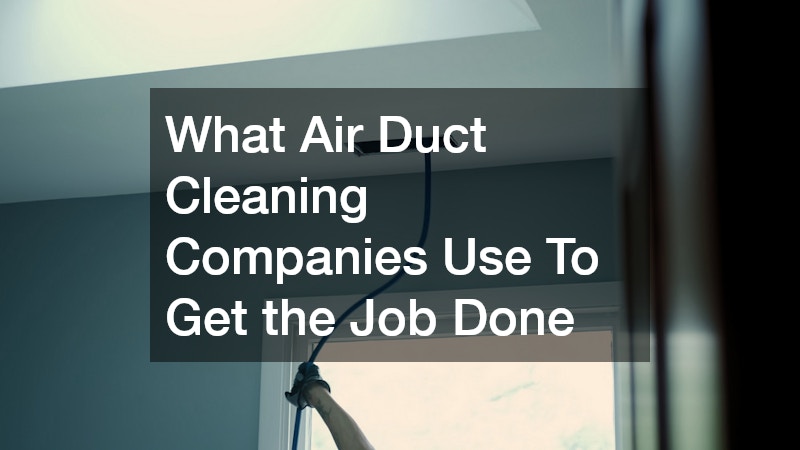
This article explores the techniques, tools, and methods used by air duct cleaning companies to ensure your HVAC system operates efficiently and effectively.
Air duct cleaning companies employ a variety of specialized tools to effectively clean HVAC systems. One of the most prominent tools is the rotary brush, which is specifically designed to agitate and dislodge dirt and debris from the walls of air ducts.
Video Source
This tool rotates as it moves through the ductwork, loosening particles that have accumulated over time. Additionally, high-powered vacuums often accompany these brushes to immediately remove the dislodged debris from the ducts, preventing it from being recirculated into the home.
Another essential tool is the air compressor. Air compressors generate a powerful stream of air that helps to dislodge stubborn contaminants and dust that may be embedded deeper in the ductwork. Some air duct cleaning companies also utilize camera inspection systems to ascertain the level of buildup within the ducts. Cameras allow technicians to visually identify areas that require more attention, ensuring a thorough cleaning process.
Besides these primary tools, many professionals rely on specialized attachments for vacuums and brushes, designed to reach tight spaces and complex duct layouts. These include flexible rods that can navigate sharp bends in ductwork, enabling comprehensive cleaning. The combination of these tools allows for an effective cleaning operation, ensuring that homeowners benefit from improved air quality and system efficiency.
Safety is paramount in air duct cleaning, and companies take various precautions to protect their staff and clients' properties. Technicians are typically required to wear personal protective equipment (PPE), such as masks, gloves, and protective eyewear. This gear safeguards them from inhaling any dust or contaminants that may be present in the ducts. Furthermore, the use of HEPA-filtered vacuums minimizes the risk of airborne particles escaping into the home environment during the cleaning process.
Air duct cleaning professionals are also trained in proper lifting techniques and the safe handling of equipment. Given the potential hazards associated with moving heavy machinery and working in confined spaces, thorough training helps prevent accidents and injuries. Additionally, companies typically ensure compliance with local regulations regarding cleaning practices and the safe disposal of waste materials extracted from the ducts.
Another crucial safety measure involves assessing the working environment before commencing cleaning. Technicians perform inspections for any potential hazards, such as mold growth or contaminants that may require special handling. By taking these precautions, air duct cleaning companies work diligently to create a safe experience for both their employees and clients, reinforcing the trust that homeowners place in their services.
The cleaning process is an intricate operation that typically begins with an assessment of the HVAC system. Technicians identify problem areas and develop a tailored cleaning strategy that incorporates various techniques. One key method is agitation, which uses mechanical brushes to disturb and loosen debris lodged in the ducts. This agitation ensures that dust and contaminants are released from their resting places, making it easier to remove them completely.
Following agitation, a vacuuming process is employed to eliminate the dislodged particles effectively. Professional-grade vacuums are essential during this phase, as they provide strong suction to draw out the debris and prevent it from escaping back into the air. This method works in tandem with agitation, ensuring that even the toughest buildups are extracted thoroughly.
In addition to these primary techniques, sanitization methods are often applied during air duct cleaning. After the ducts are cleared of debris, some companies may spray or apply a cleaning solution designed to eliminate mold, bacteria, and other harmful microorganisms. This step is vital for ensuring that the air quality in the home remains high, contributing to the overall efficacy of the HVAC system.
The frequency of air duct cleaning can vary significantly based on several factors, including the size of the home, the presence of pets, and the local environment. Generally, experts recommend that homeowners consider cleaning their ducts every three to five years to maintain optimal airflow and air quality. However, those with pets or allergies may need to schedule cleanings more frequently to mitigate excess hair and dander accumulation in the ducts.
Additionally, lifestyle factors play a role in determining the ideal frequency for cleaning. Households that smoke or have members with respiratory issues may benefit from annual cleanings. Another influencing aspect is local climate; areas with high dust levels or pollen may require more regular attention, particularly during seasonal changes when allergens are prevalent.
Understanding these factors can help homeowners make informed decisions about their air duct maintenance. The goal is to ensure that the HVAC system operates efficiently while promoting healthy indoor air quality. Regular inspections and cleanings can significantly contribute to the overall longevity and performance of the heating and cooling systems.
